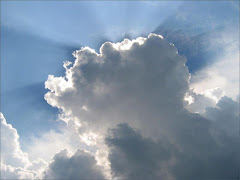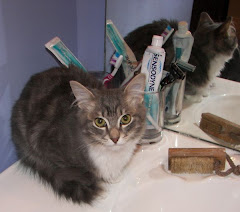
Kereru (NZ Wood Pigeon)
New Zealand has a huge, gorgeous breed of pigeon.
 They are about 2 or 3 times larger than "regular" city pigeons found all over Chicago or New York.
They are about 2 or 3 times larger than "regular" city pigeons found all over Chicago or New York. From the pigeon wiki:
Pigeons and doves (click for photos of other species) are distributed everywhere on Earth, except for the driest areas of the Sahara Desert, Antarctica and its surrounding islands and the high Arctic. They have colonised most of the world's oceanic islands (with the notable exception of Hawaii), reaching eastern Polynesia and the Chatham Islands in the Pacific, Mauritius, the Seychelles and Reunion in the Indian Ocean, and the Azores in the Atlantic Ocean.
The family has adapted to most of the habitats available on the planet. The largest number of species are found in tropical forests and woodlands, where they may be arboreal, terrestrial or semi-terrestrial. Various species also inhabit savannas, grasslands, deserts, temperate woodlands and forests, mangrove forests, and even the barren sands and gravels of atolls.

About Sep-Oct (spring) each year, Wood Pigeons come back to our neighborhood.
 This pix from our back yard in October - they like to eat the Nikau Palm tree berries.
This pix from our back yard in October - they like to eat the Nikau Palm tree berries. More information about this lovely bird: Auckland museum fact sheet.
More information about this lovely bird: Auckland museum fact sheet.From NZ Natural Heritage Collection:
Diet - Berries of the Puriri, Miro, Taraire and Karaka, supplemented by Nikau and Kahikatea are the Wood Pigeon’s favourite food all the year round. They also eat the berries and new growth of other species. Wood Pigeons can drink without raising their heads to swallow, which is unusual for a bird.
Breeding - The New Zealand Wood Pigeon breeds in spring and early summer. Mating is characterised by spectacular aerial displays of both sexes, particularly the male. The female lays a single egg which is very long, narrow and white. Both adults care for the egg during the 28 day incubation period, the hen through the night and morning, and the male midday till evening. The Wood Pigeon breeds very slowly and studies show that fewer than 15% of chicks survive to independence.
From the Kereru Awhina Project:
Kereru or (kukupa, kuku or native woodpigeon) is New Zealand’s only endemic pigeon. Kereru is also the only surviving bird since moa and huia capable of ingesting the large fruit and berries of the native trees of New Zealand and dispersing their seed. Trees such as miro, puriri, tawa and tairare are especially reliant on Kereru to disperse their seed so that they may naturally regenerate.
Both the male and female Kereru are similar in looks. The head, throat and chest of Kereru are a beautiful metallic, green and bronze iridescence. The breast and belly of the bird are white. The eyes, eye rings, beak and feet are a dark crimson.
Kereru is found in most lowland native forests of the North and South Islands , Stewart Island and many of its neighbouring islands. There are two sub-species of native pigeon, the New Zealand pigeon (Hemiphaga novaeseelandiae) known to the Maori as Kereru, or in Northland as kuku or kukupa, and the Chatham Island pigeon (Hemiphaga n. chathamensis) or parea.


Kereru or (kukupa, kuku or native woodpigeon) is New Zealand’s only endemic pigeon. Kereru is also the only surviving bird since moa and huia capable of ingesting the large fruit and berries of the native trees of New Zealand and dispersing their seed. Trees such as miro, puriri, tawa and tairare are especially reliant on Kereru to disperse their seed so that they may naturally regenerate.
Both the male and female Kereru are similar in looks. The head, throat and chest of Kereru are a beautiful metallic, green and bronze iridescence. The breast and belly of the bird are white. The eyes, eye rings, beak and feet are a dark crimson.
Kereru is found in most lowland native forests of the North and South Islands , Stewart Island and many of its neighbouring islands. There are two sub-species of native pigeon, the New Zealand pigeon (Hemiphaga novaeseelandiae) known to the Maori as Kereru, or in Northland as kuku or kukupa, and the Chatham Island pigeon (Hemiphaga n. chathamensis) or parea.

My attempt at a water color on Christmas day morning...

ummm.... well at least the table, deck & yard looks nice...
Here is a little 2 minute clip of what they look like in trees while feeding...















No comments:
Post a Comment